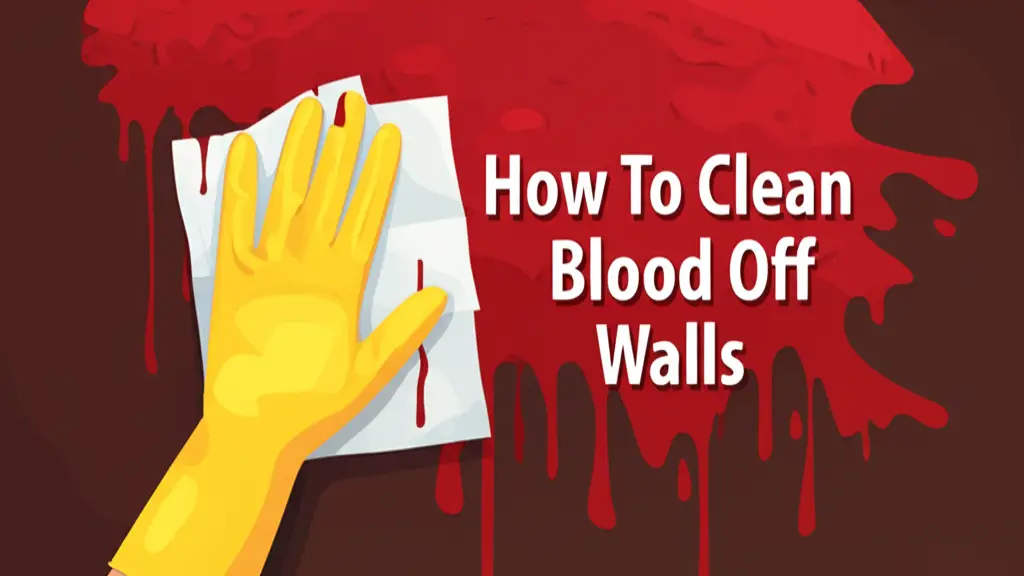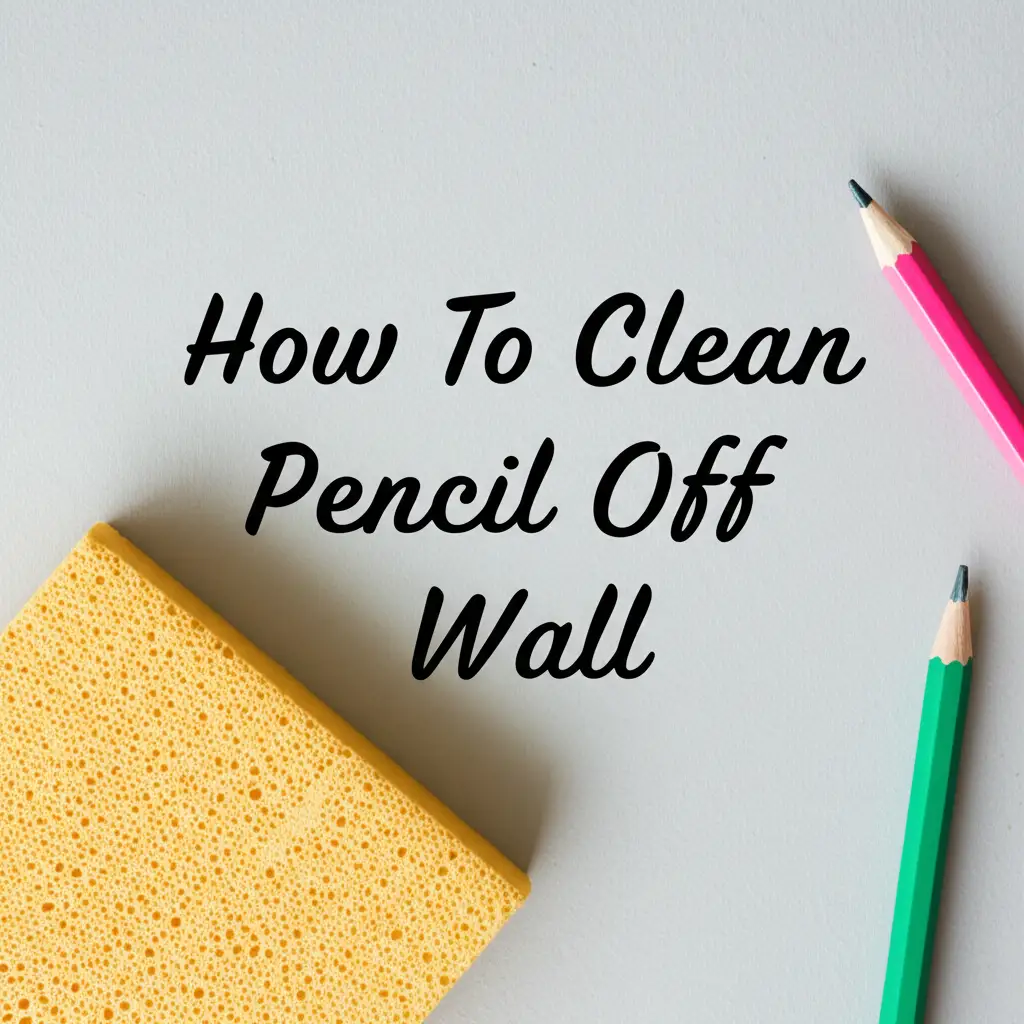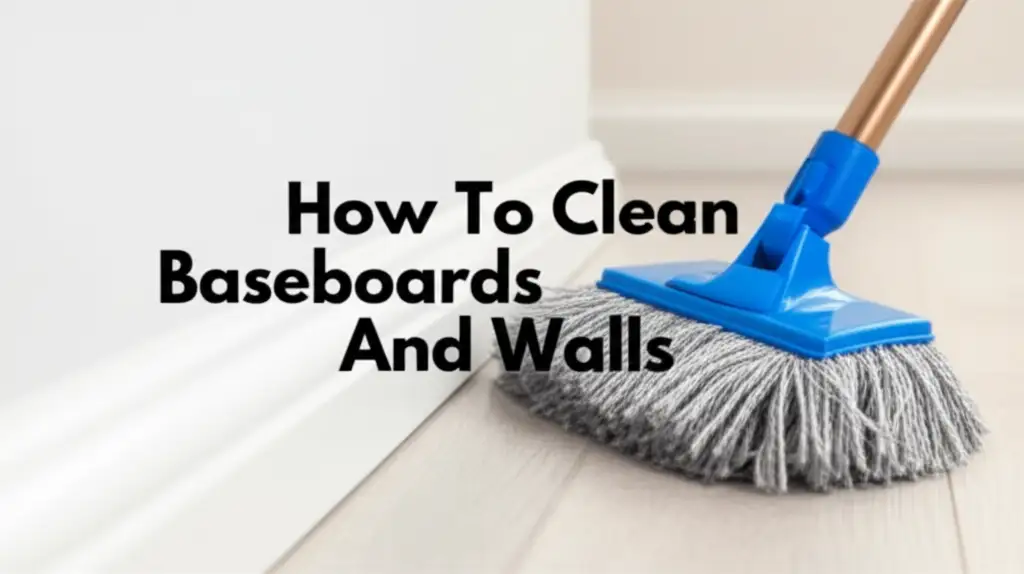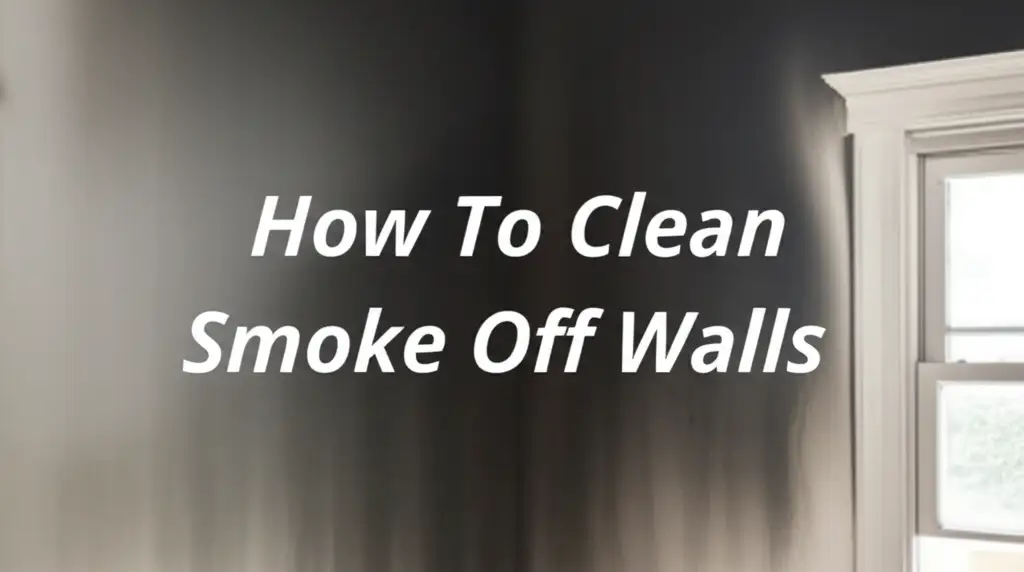· Home Cleaning · 13 min read
How To Clean Blood Off Walls

How To Clean Blood Off Walls: A Complete Guide
Discovering blood on your walls can be a distressing sight. Whether it is a small cut, a pet accident, or something more serious, knowing how to clean blood off walls quickly and effectively is very important. Fresh blood stains are easier to remove than dried ones. Acting fast helps prevent permanent damage to your wall surfaces.
This guide provides simple, step-by-step instructions. We cover safety measures, cleaning solutions, and techniques for different wall types. We also discuss what to do when stains are stubborn. You will learn how to restore your walls to a clean, fresh state.
Takeaway:
- Act Fast: Treat blood stains immediately for the best results.
- Prioritize Safety: Always wear protective gear during cleanup.
- Choose Right Cleaner: Select solutions based on stain age and wall material.
- Blot, Do Not Rub: Blotting prevents spreading the stain further.
- Rinse and Dry: Ensure walls are dry to prevent water marks or damage.
To clean blood off walls, act quickly. Blot fresh stains with a damp cloth, moving inward. For dried blood, moisten the area with an enzyme cleaner or hydrogen peroxide. Gently scrub with a soft brush or cloth. Rinse with clean water and dry thoroughly to prevent damage.
Safety First: Essential Precautions for Blood Cleanup
Cleaning blood requires careful attention to safety. Blood can carry pathogens, making personal protection important. Taking precautions protects your health. It also ensures proper handling of contaminated materials.
Always prepare your cleaning area before you start. Clear any items from the wall. Ensure you have good ventilation in the room. This helps disperse any fumes from cleaning solutions.
Personal Protective Equipment (PPE)
Wearing the right gear protects your skin and airways. I always put on disposable gloves first. These should be sturdy, like nitrile or latex. Eye protection is also a good idea to prevent splashes from reaching your eyes.
Consider wearing a mask if the spill is large or if you use strong chemicals. An apron or old clothes can also protect your clothing. Dispose of all used PPE properly after cleaning.
Ventilation and Biohazard Disposal
Open windows and doors to ensure good airflow. This is especially true when using cleaners like hydrogen peroxide or bleach. Good ventilation prevents the buildup of strong odors. It also reduces exposure to chemical fumes.
All materials that touched the blood are biohazards. This includes cloths, paper towels, and gloves. Place them in a sealed plastic bag. Then, put that bag into another bag. Dispose of these bags according to local regulations for biohazardous waste. Never put them directly into your regular trash.
Act Fast: Tackling Fresh Blood Stains on Walls
Fresh blood stains are the easiest to remove. Speed is very important here. The longer blood sits, the more it sets into the wall surface. Quick action can prevent a permanent mark.
Have your cleaning supplies ready before you begin. This includes clean cloths, a spray bottle, and your chosen mild cleaning solution. Working quickly minimizes the need for stronger cleaners later. Remember, a quick response saves effort.
Blotting Method
Do not rub a fresh blood stain. Rubbing spreads the blood and pushes it deeper into the wall fibers. Instead, use a clean, damp cloth or paper towel to blot the stain. Start from the outer edges of the stain and blot inward.
This technique pulls the blood away from the wall. Continue blotting with fresh sections of the cloth until no more blood transfers. You may need to use several cloths for larger stains. This method is similar to how you would remove other marks from painted walls, preventing the stain from setting further. For more on removing general marks, you can read about how to clean marks off painted walls.
Gentle Cleaning Solutions
After blotting, apply a gentle cleaning solution. For fresh blood, cold water is often enough. You can lightly spray the area with cold water. Then, continue to blot with a clean cloth. Never use hot water, as it can set the blood protein.
If water alone is not enough, add a few drops of mild dish soap to cold water. Mix it until suds form. Apply the suds with a clean cloth. Continue blotting until the stain lifts. Always rinse the area with a damp, clean cloth after using soap.
Removing Dried Blood Stains from Various Wall Surfaces
Dried blood stains present a greater challenge. The blood has bonded with the wall material. It requires a different approach than fresh blood. Patience and the right products are key.
It is important to know your wall type. Different surfaces react differently to cleaners. Test any solution in a hidden area first. This prevents accidental damage to your wall’s finish.
Painted Walls
Painted walls can be tricky because you want to remove the stain without removing the paint. Start by gently moistening the dried blood with cold water. Use a damp cloth, but avoid saturating the wall. This helps rehydrate the blood. Then, apply a small amount of an enzyme cleaner. Enzyme cleaners break down proteins in blood. Let it sit for a few minutes, as directed on the product label.
Gently scrub the spot with a soft brush or non-abrasive sponge. Work in small circular motions. Once the stain is gone, wipe the area with a clean, damp cloth to remove any residue. For more tips on preserving your wall’s finish, explore how to clean walls without removing paint. If you are dealing with general grime, information on how to clean dirt off walls can also be useful.
Wallpaper and Drywall
Cleaning blood from wallpaper requires extra care. Wallpaper can tear or lift easily. For dried blood, gently moisten the stain with a damp cloth. Use as little water as possible. Then, use a cotton swab dipped in hydrogen peroxide. Dab it lightly onto the stain. Hydrogen peroxide works well on organic stains like blood.
Do not rub or soak the wallpaper. Blot gently until the stain fades. For drywall, if the blood has penetrated the surface, you may need to go deeper. After applying hydrogen peroxide or an enzyme cleaner, you might need light sanding and repainting. This is often the case if the stain is old and deep. Always dry the area quickly after cleaning.
Effective Cleaning Solutions for Blood Stain Removal
Choosing the correct cleaning solution makes a big difference. Some solutions are better for fresh stains, others for dried ones. Always test your chosen cleaner on an inconspicuous area first. This checks for colorfastness or damage.
Safety is crucial when working with cleaning chemicals. Read product labels carefully. Ensure good ventilation in the room before you begin. Protecting your hands with gloves is also important.
Hydrogen Peroxide Power
Hydrogen peroxide is a very effective solution for blood stains. It works by breaking down the proteins in blood. For dried stains, moisten the area with cold water first. Then, apply a small amount of 3% hydrogen peroxide directly onto the stain using a cotton ball or spray bottle. You might see some bubbling, which means it is working.
Let it sit for a few minutes. Then, blot the area with a clean, damp cloth. Repeat if necessary. Hydrogen peroxide can bleach some surfaces, so always test it first. It is a powerful oxidizer, effective for many organic stains.
Enzyme Cleaners and Detergents
Enzyme cleaners are made to break down biological stains. They contain enzymes that target proteins, fats, and carbohydrates in blood. These cleaners are excellent for both fresh and dried blood. Follow the product instructions for best results. Typically, you spray the cleaner onto the stain, let it sit, then blot it away.
For a simple detergent solution, mix a small amount of mild dish soap with cold water. Apply the suds with a clean cloth. This works well for fresher stains on washable surfaces. Remember to rinse the area thoroughly with plain water after using any detergent.
Natural Alternatives (Vinegar, Baking Soda)
Sometimes, natural products can help. White vinegar is a mild acid that can help break down blood. Mix equal parts white vinegar and cold water. Apply this solution to the stain with a clean cloth. Blot gently until the stain lifts. Rinse with clean water.
Baking soda can also create a paste for dried stains. Mix baking soda with a little cold water to form a thick paste. Apply the paste to the stain. Let it dry completely. Then, gently brush off the dried paste. The baking soda helps lift the stain. While similar to how you might use vinegar for mold, its action on blood is different. For more on using vinegar for cleaning, see how to clean mold with vinegar.
Step-by-Step Guide to Cleaning Blood Off Walls
A systematic approach ensures thorough cleaning and prevents re-staining. Following steps helps you manage the task. This minimizes effort and maximizes effectiveness. Always start with preparation and move carefully through each phase.
This guide works for most common wall surfaces. Adjust the products based on your wall material. Taking your time ensures no steps are missed. A clean result is the goal.
- Prepare Your Area and Yourself: Gather all supplies: gloves, old cloths, cleaning solution, spray bottle, bucket of cold water. Put on your gloves. Ensure the room has good airflow by opening windows.
- Blot Fresh Stains (If Applicable): For fresh blood, immediately blot the stain with a clean, damp cloth. Start from the outside and work your way in. Do not rub, as this spreads the stain. Replace cloths as they become soiled.
- Moisten Dried Stains: For dried blood, lightly spray the area with cold water or a specific enzyme cleaner. Allow it to sit for a few minutes to soften the dried blood. This makes removal much easier.
- Apply Cleaning Solution:
- For Fresh Blood (after blotting): Use a mix of cold water and a few drops of mild dish soap. Apply with a clean cloth.
- For Dried Blood: Apply hydrogen peroxide (3%) with a cotton ball or enzyme cleaner as directed. Test on a hidden spot first.
- Gently Work the Stain: Use a soft brush or clean cloth. Gently scrub or dab the stain. Use light pressure. For tougher stains, you might need to repeat the application and scrubbing.
- Rinse the Area: After the stain is gone, wipe the cleaned area with a clean cloth dampened with plain cold water. This removes any cleaning solution residue. Removing all residue helps prevent new dirt from sticking. It also helps prevent streaks. For tips on streak-free cleaning, refer to how to clean painted walls without leaving streaks.
- Dry Thoroughly: Pat the area dry with a clean, dry towel. You can also use a fan to speed up drying. This prevents moisture damage to your walls, especially on drywall or wallpaper.
- Dispose of Materials: Place all used cloths, paper towels, and gloves into a sealed plastic bag. Then, double-bag it. Dispose of these materials as biohazardous waste according to local guidelines.
Addressing Stubborn Blood Stains and Odors
Sometimes, blood stains are very persistent. This often happens with old or large spills. Standard methods may not fully remove them. These situations require a bit more effort. Do not get discouraged if a stain does not lift immediately.
Besides the visual stain, blood can also leave an odor. This smell needs specific treatment. Odors can linger even after the visible stain is gone. Addressing both aspects ensures a truly clean result.
What to Do When Standard Methods Fail
If blood stains remain after your initial attempts, do not give up. For painted walls, a light sanding and repainting might be the only option. This is especially true if the blood has seeped into the paint layers. Use fine-grit sandpaper to gently buff the area. Then, prime the spot before repainting.
For drywall, if the stain is deep, you might need to cut out the affected section. Then, replace it with a new piece of drywall. This is a bigger job but ensures full removal. Consider using a stronger, professional-grade enzyme cleaner. These are designed for tough biological stains. Follow all safety warnings on the label.
Eliminating Lingering Odors
Even if the visible stain is gone, an odor can remain. This is because blood proteins can get into porous surfaces. To remove odors, try an odor neutralizer spray designed for biological odors. These products break down odor molecules.
Baking soda is a natural deodorizer. You can make a paste with baking soda and water. Apply it to the affected area. Let it sit until dry, then brush it off. This can absorb lingering smells. Ensure the area is completely dry. Moisture can cause mold, which also carries an odor. Good ventilation during and after cleaning helps a lot.
When to Call a Professional for Blood Cleanup
While many blood stains are manageable for homeowners, some situations need expert help. Knowing when to step back is important. Professional cleaners have specialized training and equipment. They handle situations that pose greater risks.
Recognizing these limits ensures safety for everyone involved. It also guarantees a thorough and proper cleanup. Do not hesitate to seek professional assistance when needed. Your safety and health are the most important considerations.
Large Spills and Biohazard Risks
If the blood spill is large, covering a wide area, it is usually best to call a professional. Large spills increase the risk of pathogen exposure. Professionals have special gear and cleaners. They can clean and disinfect the area properly. They also know how to dispose of biohazardous waste safely. This protects you and others from health risks.
Spills involving significant amounts of blood, especially from trauma, are biohazards. Do not attempt to clean these yourself. Professional biohazard remediation teams follow strict protocols. They ensure complete decontamination. This prevents the spread of infections. Their expertise is crucial in these serious situations.
Emotional Distress and Specialized Situations
Cleaning blood from traumatic events can be emotionally difficult. If you feel overwhelmed or distressed, it is wise to hire professionals. They can handle the task efficiently and with discretion. This allows you to focus on your well-being. Do not put yourself in a situation that causes further emotional harm.
Some surfaces or locations might make cleaning more complex. For example, porous materials like unfinished wood or deeply stained carpet. If the blood has penetrated deeply, specialized equipment may be needed. Professionals have tools like industrial-grade extractors. They also have access to powerful, hospital-grade disinfectants. These tools ensure the complete removal of blood and its residues.
Conclusion
Cleaning blood off walls can seem daunting, but it is a manageable task with the right approach. By acting quickly, wearing protective gear, and using suitable cleaning solutions, you can restore your walls. Remember to always blot fresh stains and apply appropriate treatments for dried blood. Different wall surfaces require specific care, so tailor your method to the material.
From hydrogen peroxide to enzyme cleaners, various products can help you remove stubborn blood. Always ensure you rinse and dry the cleaned area thoroughly to avoid further issues. For large or biohazardous spills, do not hesitate to contact professionals. They offer expert help and ensure safety. By following these steps, you can effectively clean blood off walls, maintaining a clean and safe home. Do you need more cleaning tips? Visit our website for further guidance on maintaining a spotless home!
- blood stain removal
- wall cleaning
- biohazard cleanup
- household cleaning
- stain removal tips
- emergency cleaning
- wall care




